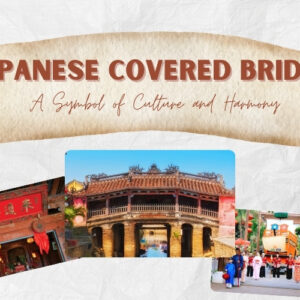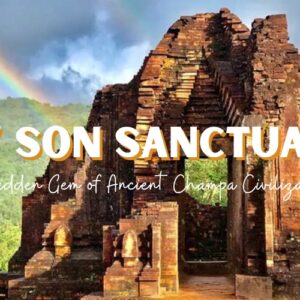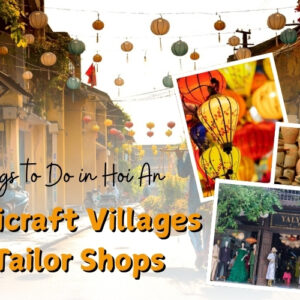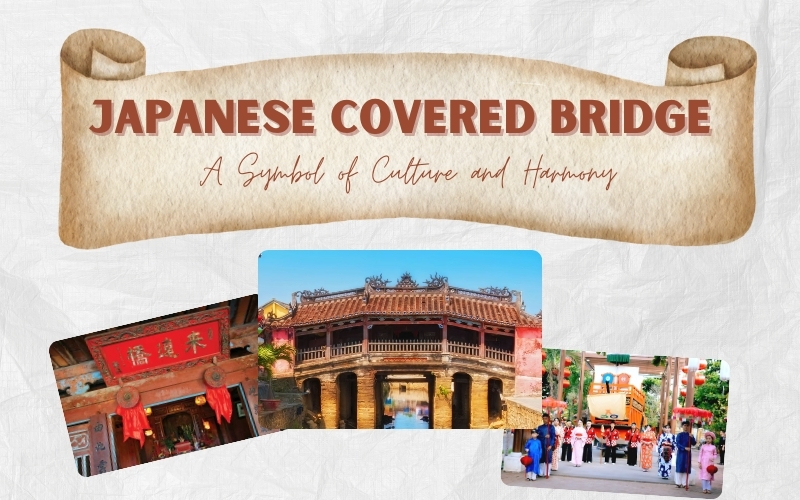
The Japanese Covered Bridge – an ancient bridge lying peacefully across a small canal in the heart of Hoi An ancient town. After 400 years of history, it has become a tourist symbol of the old town. Let’s explore interesting things about the Japanese Covered Bridge, a destination not to be missed when coming to Hoi An.
General Information of the Japanese Covered Bridge
- Address: 186 Tran Phu, Minh An Ward, Hoi An, Quang Nam. The bridge crosses a small creek connecting to the Hoai River
- Opening hours: 9:00 – 11:00 | 15:00 – 22:00
- Entrance fee: 80,000 VND/Vietnamese visitor, 120,000 VND/international visitor. This ticket allows you to visit any 5 locations among the relics and scenic spots in the old town area, including the Japanese Covered Bridge.
The Japanese Covered Bridge in Hoi An is a 400-year-old symbol located in the center of Hoi An ancient town, Quang Nam province. Anyone who comes to this place is impressed by its majesty as a testament to history. This unique architectural work is not only a witness to a period of brilliant development of Hoi An but also a symbol of harmony and cultural exchange between Vietnam, Japan and China. The exquisite beauty and historical value of the structure have helped it become an irreplaceable symbol of Hoi An – a World Cultural Heritage recognized by UNESCO.
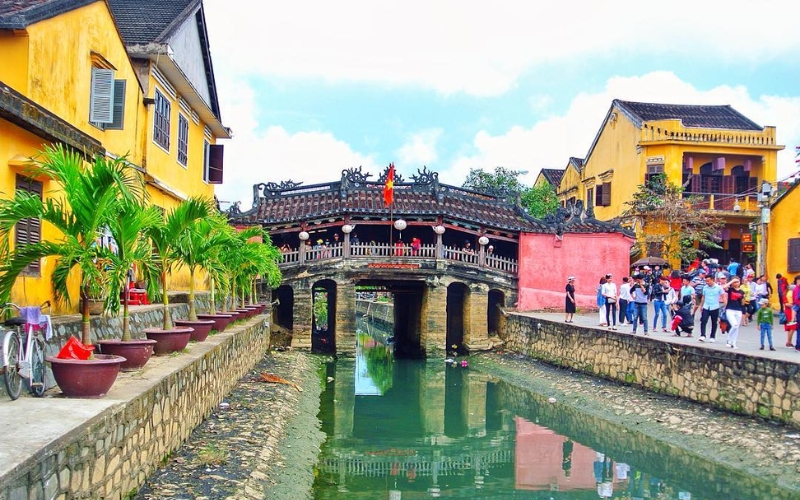
The Japanese Covered Bridge in Hoi An
History of Japanese Covered Bridge
The Japanese Covered Bridge in Hoi An was built in the 17th century with the contribution of Japanese merchants. This place is associated with the legend of a monster named Namazu. Accordingly, its head is located in India, its body is in Vietnam and its tail is in Japan. Therefore, every time the monster moves, floods and earthquakes often occur. This temple was built with the meaning of a sword blocking the monster’s back. Therefore, it will not be able to move and cause chaos in human life. From then on, the three countries will always be peaceful and prosperous.
In 1653, people built an additional temple, connected to the northern railing and protruding into the middle of the bridge, from which the name Hoi An Covered Bridge was born! In addition, this place also has another name, the Japanese Bridge, due to its Japanese-style architecture. In 1719, Lord Nguyen Phuc Chu came to Hoi An and named the bridge Lai Vien Kieu, meaning “Bridge to welcome guests from afar”.
The pagoda was restored in 1817, 1865, 1915, 1986 and gradually lost Japanese architectural elements, replaced by architecture with bold Vietnamese and Chinese styles. On February 17, 1990, the Bridge was granted the title of National Historical-Cultural Relic. Its most recent restoration was in 2023, lasting about 10 months, giving the bridge a completely new and more solid appearance.
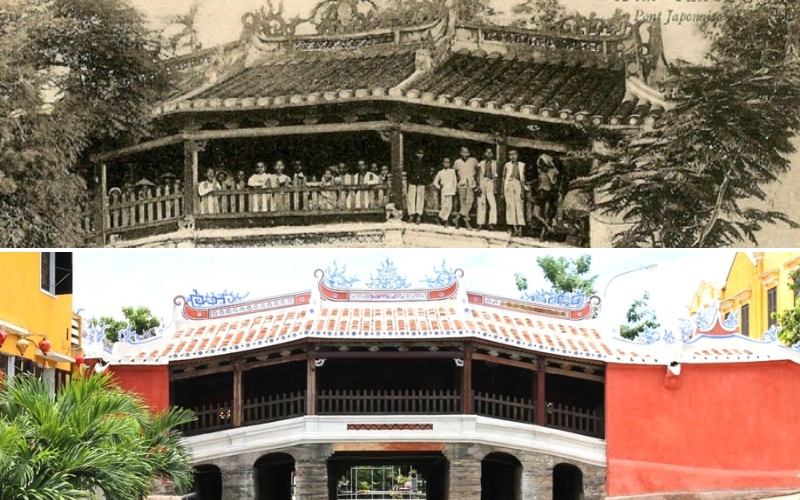
The bridge from the past and after the latest renovation in 2023
What is special about the Japanese Covered Bridge?
An overview of the bridge’s architecture
The Japanese Covered Bridge in Hoi An was built in the architectural style of “Shangjiaxiaqiao”, meaning the house above and the bridge below. This is a unique and popular architectural style in Asian countries. From the outside, the bridge stands out thanks to its unique roof system supported by a wooden structure, and the foundation is made of stone pillars.
The surface of the bridge is like a rainbow, paved with planks as a passageway, with narrow corridors on both sides for a resting place with seven wooden compartments. On the door of the bridge, there is a red horizontal board with the three words “Lai Vien Kieu” given by Lord Nguyen Phuc Chu in 1719, meaning the bridge of friends from far away.
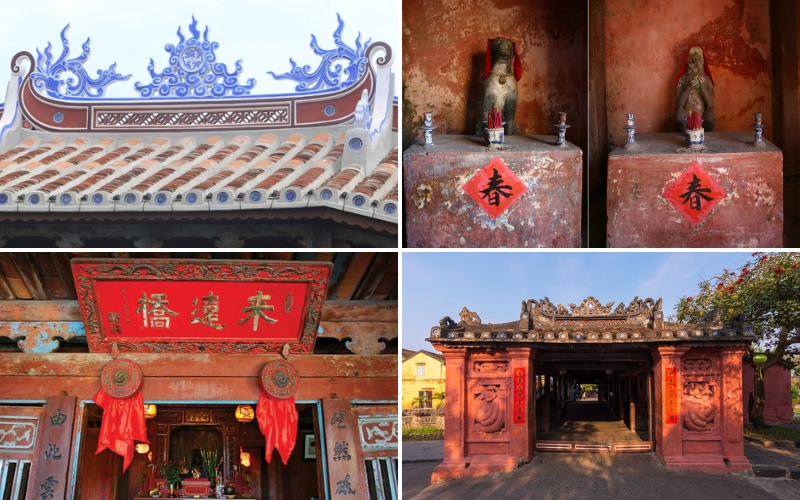
The impressive architecture of the bridge
The pagoda and bridge are both made of wood, painted red and carved with many elaborate motifs, in harmony between Vietnamese, Chinese and Japanese architectural styles. At both ends of the bridge are monkeys and dogs made of jackfruit wood with sophisticated and extremely vivid carvings, in front of each is an incense burner. According to the Japanese concept, these are mascots representing the birth year of the Japanese Emperors at the time of the bridge’s construction. In addition, they also symbolize the protection and guarding of the bridge.
The pillars and columns inside the bridge are carved in extremely detailed and sophisticated detail, clearly showing the aesthetics and worship beliefs of the ancient people of the old town. The gilded wooden columns are elaborately carved with feng shui symbols such as dragon, unicorn, turtle, and phoenix, symbolizing prosperity, peace, and eternity. In addition, the Chinese parallel sentences carved with sophisticated calligraphy on the railings and wooden columns not only have aesthetic meaning but also convey profound messages about peace and belief.
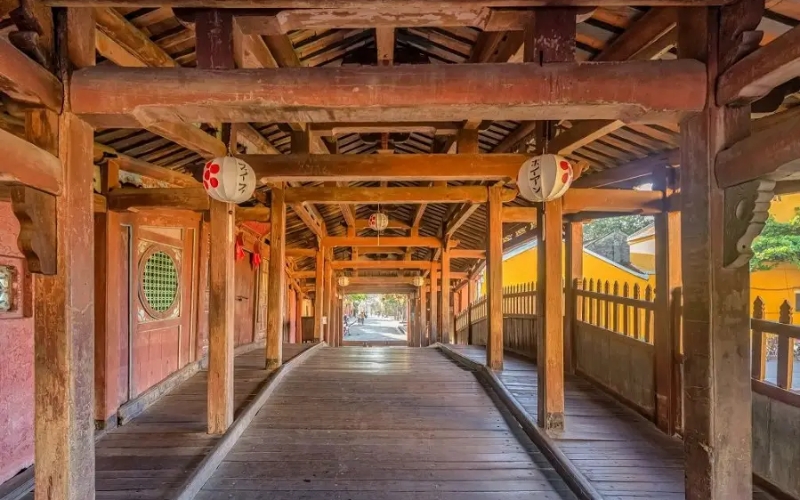
The space inside Japanese Covered Bridge
The temple on the bridge
The highlight of the Japanese Covered Bridge is the small temple located in the North, worshiping Bac De Tran Vo – the guardian god of the country, with the wish to pray for peace and tranquility for the residents around here. Inside the temple, other gods such as Tho Dia and Than Tai are also worshiped. The temple is elaborately decorated with many sophisticated motifs, showing the harmonious combination of Vietnamese, Chinese, and Japanese cultures. This is where local people often come to pray for health, peace and luck.
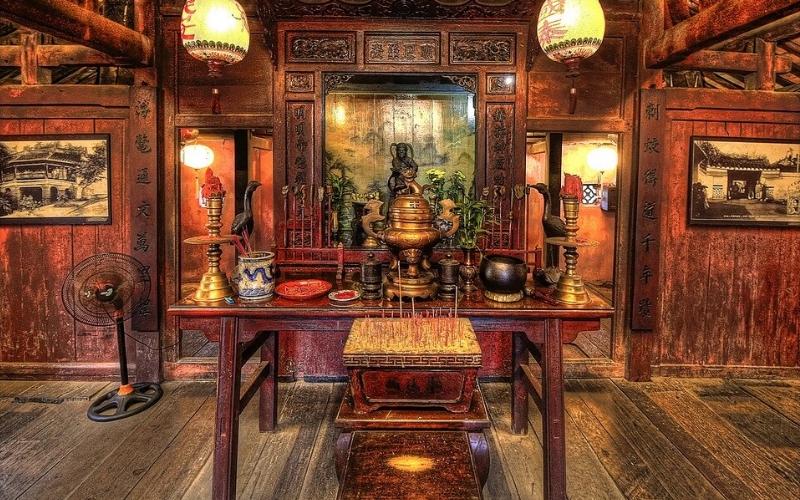
Inside the temple worshiping Bac De Tran Vo
> > > While the Japanese Covered Bridge is a highlight of Hoi An, there’s so much more waiting just around the corner. Let’s discover it all with our Hoi An tours that bring the town’s stories to life.
Cultural and spiritual significance
Symbol of Hoi An
Over hundreds of years, the Japanese Covered Bridge has become an indispensable symbol of Hoi An ancient town. The image of the ancient bridge spanning a small canal has been deeply imprinted in the minds of both locals and tourists. In particular, the image of the Japanese Covered Bridge was printed on the back of the 20,000 VND note in 2006 and is still used today. With the image on the note, the Japanese Covered Bridge has gone beyond the local limits, becoming a unique cultural symbol in the hearts of every Vietnamese person and those who love Hoi An.
The ancient town of Hoi An was once a trading port, where merchants from different countries met and traded. And the Japanese Covered Bridge is evidence of Hoi An’s bustling trading history in the past. It represents the cultural exchange between countries and ethnic groups, creating a unique identity for this land.
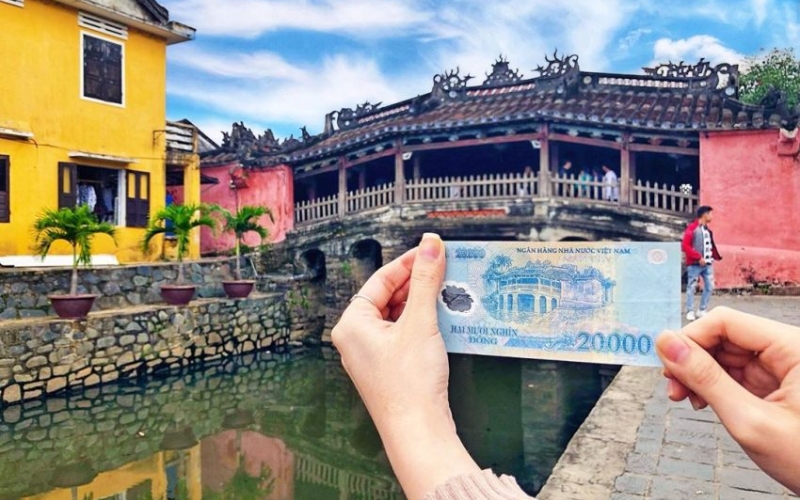
The image of the bridge was printed on the back of the 20,000 VND
Folk beliefs
For Hoi An people, the Japanese Covered Bridge also has a deep spiritual meaning. They believe that the bridge has the ability to suppress evil spirits, protect the city from natural disasters, and bring peace and prosperity. The Japanese Covered Bridge in Hoi An is closely associated with the lives of local people and has been a place for practising the belief of suppressing water monsters from ancient times until now.
On holidays or full moon days, many people still keep the habit of going to the Japanese Covered Bridge to burn incense and pray. They believe that this will bring luck and peace to themselves and their families.
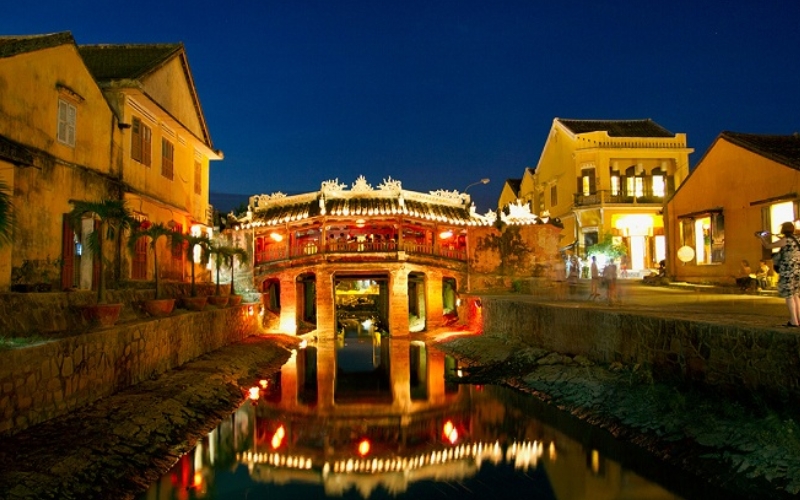
Japanese Covered Bridge at night
Travel tips when visiting Japanese Covered Bridge
Here are some helpful tips for visitors when visiting the Japanese Covered Bridge in Hoi An, one of the town’s most iconic and historically significant landmarks:
- Buy tickets to visit the old town (including the Japanese Covered Bridge) at official ticket counters. If you are travelling in a large group, you should hire a tour guide to introduce you to the unique architectural features and hear about the old stories of Hoi An.
- The bridge is one of the most visited attractions in the old town, so it is always crowded all day. You can visit early in the morning, before 9am, or late in the afternoon, after 4pm. This time period offers soft light suitable for taking photos and fewer people passing by.
- Dress politely and elegantly when entering the temple area, keep order and do not touch sacred objects or altars. Do not climb or write on the structures of the bridge.
The Japanese Covered Bridge is not only a unique architectural work but also a historical witness, containing many interesting cultural stories. Through that, you will understand more about history and feel and reminisce about the ancient features in the hustle and bustle of life. When coming to Hoi An, don’t forget to spend time exploring this place to fully feel the beauty and soul of the old town.
Read more:
